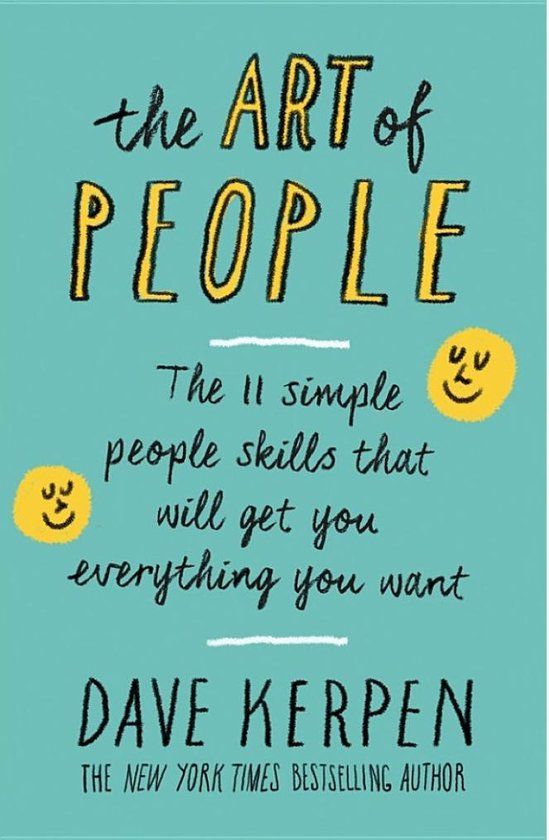The Art of People – Dave Kerpen

Life is short. The less time we waste on the weather, the better!
When meeting a new person
Consider some of the following inquiries in place of the typical “what do you do for a living” or “where do you reside” queries:
- What do you consider to be the most exciting aspect of your professional life?
- What is now the most exciting thing in your personal life?
- Would you act differently if money weren’t a concern?
- Who, and why, serves as your role model?
Listening To People
A large part of understanding people is not talking but rather shutting up and listening.
You must resist the urge to speak. Simply keep returning the conversation to the other person. You must learn to truly listen and actively consider and care about what the other person is saying.
It is the act of attempting to comprehend their point of view rather than focusing solely on your own. People feel valued, respected, inspired, and eager to solve problems when they are listened to.
Managing People
The key point is to put everyone at ease. It is not about picking a winner, but about finding a solution that works for both parties.
Your first instinct may be to try to resolve the conflict as quickly as possible. But, in reality, this will not work. Before either side can calm down and collect themselves, they must first feel heard.
Validation
Validation is taking mirroring to another level. The goal is to repeat what the other person says while also implying some understanding of how they are feeling. One caveat to be aware of is the risk of misinterpreting feelings. If you get it wrong, it can be disastrous.
Validation does not have to be agreement; it can also be understanding where the other person is coming from and genuinely caring. Even if there is disagreement, validation allows for a more constructive resolution rather than a defensive one.
Feedback and Influence
When providing feedback, make sure your criticism is always constructive and keep the following points in mind:
- Don’t give a critique in front of others. Don’t try to humiliate someone.
- Have a one-on-one conversation.
- Instead of simply identifying problems, propose positive solutions.
- Avoid dwelling on the negative.
- People despise being sold to. Instead, concentrate on storytelling.
- Storytelling allows you to share about yourself and connect with people on an emotional level.
- It’s not a technique; it’s more natural.
Standing out from the crowd
Nobody talks about a simple networking strategy. You want to be noticed when you stand out from the crowd. You need a point of difference in a room full of people trying to get noticed.
Wear an eye-catching piece of clothing—something that stands out and could spark a conversation. Something that people will notice and want to talk to you about.
Influencing People
If you want to be truly influential, you should encourage people to come up with your idea “on their own”:
Use the phrase ‘I have an idea’ instead. Push the other person in the direction of your idea and the results in a subtle way. Don’t be too specific.
You could try explaining the polar opposite of what you want.

